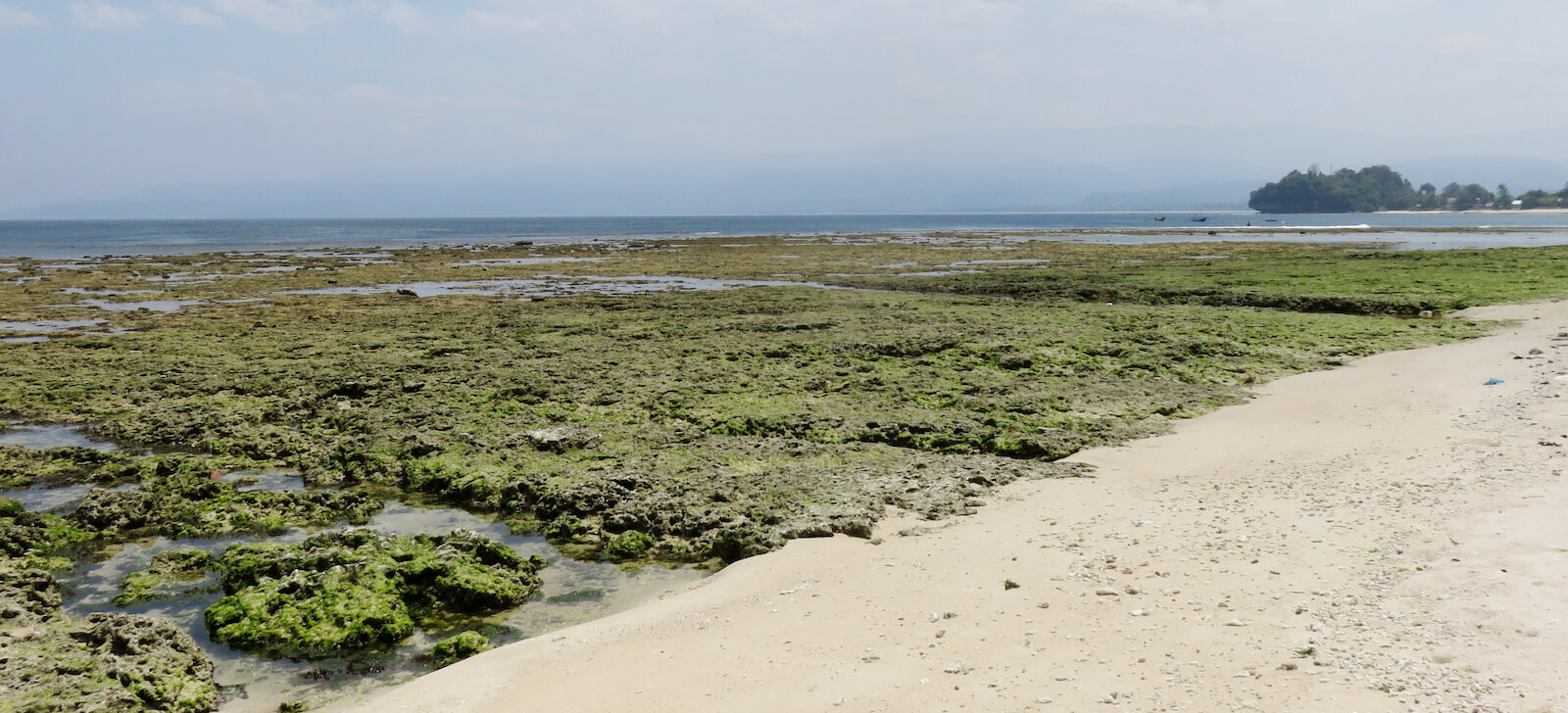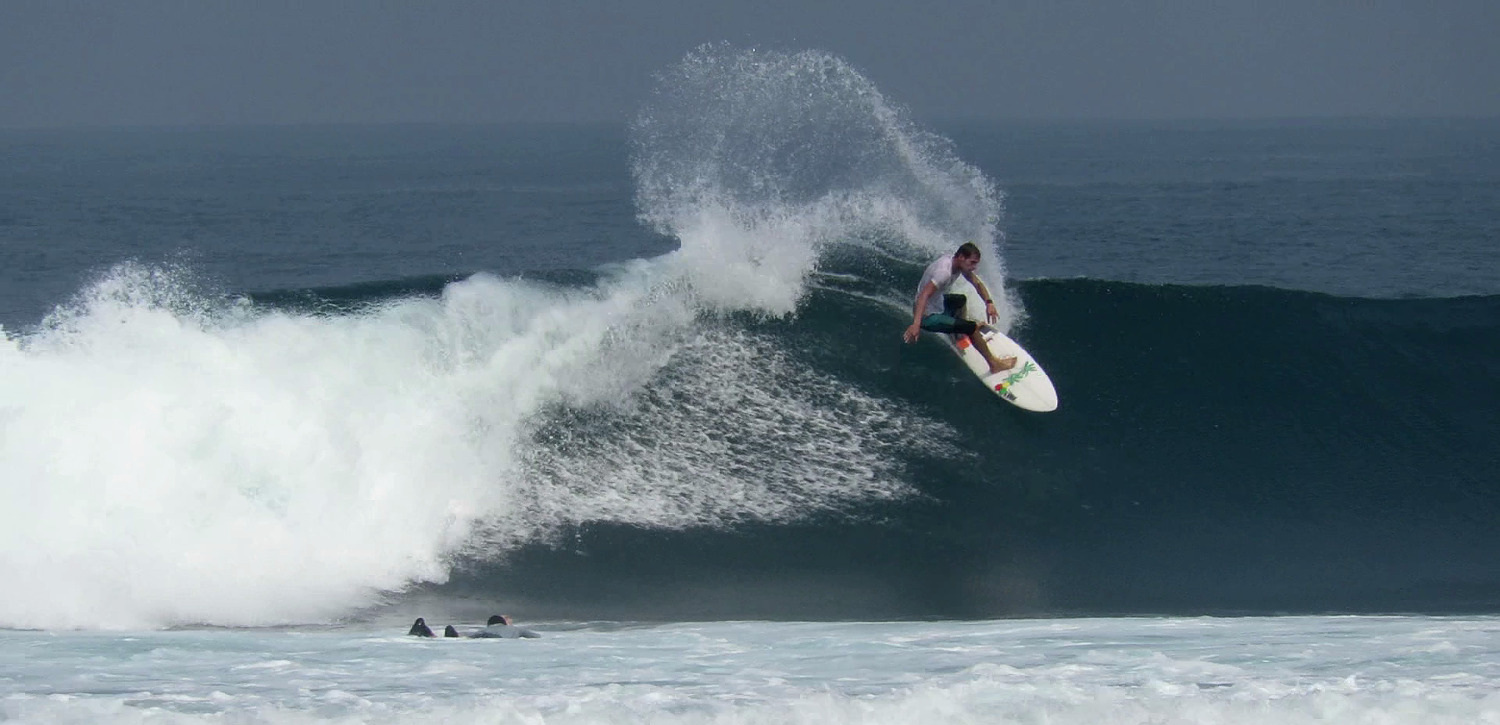
Planning your surf trip to Krui South Sumatra
The Krui area of mainland Sumatra has been on the surf radar for over 20 years but it's still not a major surf destination. Not because it's difficult and expensive to get to but because it's a fickle surf zone given other easier Indonesian destinations. The local surf community consists of a handfull of young Indonesian surfers and a growing number of 55+ year old expats. With a shortage of consistently World Class waves in the area no pro surfers have based themselves in Krui and few if any expert to master surfers choose Lampung as their goto surf destination.
Visiting surfers are primarily below intermediate level European and Australian surfers who aren't looking for 2.4 mtr plus, machine like, top to bottom Indo perfection. The vast majority being well travelled 50+ year olds in search of a less crowded destination where they can still score waves.
Here's some local knowledge to increase your chance of a successful surf trip to South Sumatra.
Level of surfing
Beginners
No matter what time of the year this is not the ideal destination to learn how to surf in a couple of weeks.
Peak Season: You'll be competing for waves with experienced surfers. Sitting on the shoulder and waiting for the leftovers does not pan out well.
Shoulder Season: 30% smaller crowds. Inconsistent confused swells. Variable winds tending on-shore. More rainy days.
All year: You will be surfing over sharp shallow reefs where people get seriously injured.
Intermediate
On most days the waves around the Krui and Utara district suit intermediate to advanced surfers.
Advanced
The Krui area does not have any World Class waves, only waves that have World Class days. For this reason very few advanced to expert or master surfers visit the area.
☑ Recommended min surfing skill: intermediate to advanced.
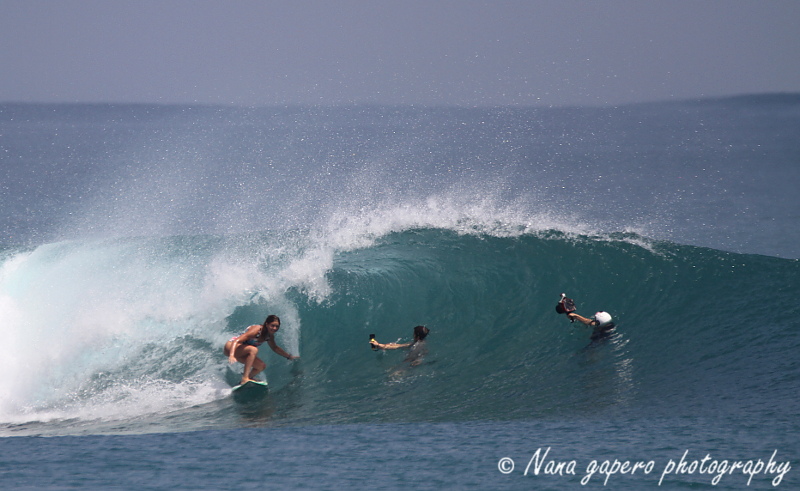 Krui Left July 2017 ~ © Nana Gapero
Krui Left July 2017 ~ © Nana Gapero
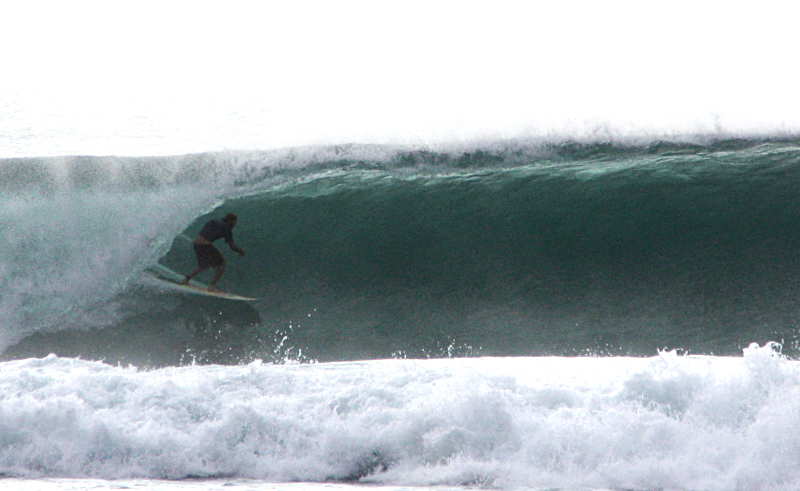 Thick sectioning Way Jambu 2013
Thick sectioning Way Jambu 2013
When to come
Below are some general dates to consider when planning your trip.
Shoulder season – March to June
Crowds are smaller in March and April but swell quality and consistency only starts improving in May. This time of year could be good, could be onshore and raining for weeks.
La Niña
A La Niña year usually produces wetter rainy seasons with poor surf conditions continuing into April.
El Niño
During an El Niño March and April can be quite dry with light variable winds and swell size between .6 to 1.8 mtr.
Peak season - June to September
During the southern hemisphere winter the Great Southern Ocean sends 1 large long lasting swell a week towards the Sumatran coast. Offshore winds make this the best time to score 1.8 mtr plus surf at Krui Left, The Peak, Ujung Bocur and Way Jambu.
Shoulder season – September to November
Crowds start dropping off and rainy days begin increasing in September. A risky time for a surf trip as the conditions could fall apart anytime.
La Niña
A La Niña usually produces poorer surf conditions with confused swells, weaker trade winds and more rain.
El Niño
September can be sheer magic during an El Niño year.
Off season – November to March
The worst of the rainy season. Swell size and consistency begins dropping off in September as the Southern Ocean winds down. By December low pressure systems begin to develop south of the Sunda Strait driving onshore winds and rain toward the Sumatran coast. Most surfers have left the area. On an average year you can expect 1 decent swell a month with long flat spells of up to 14 days.
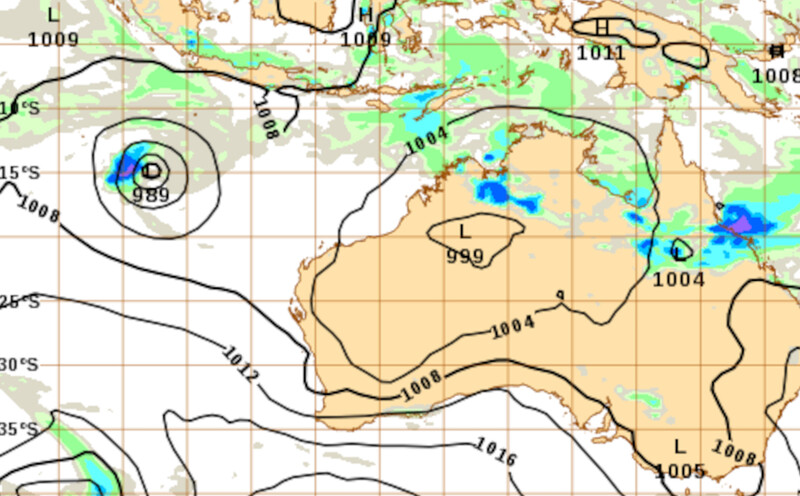
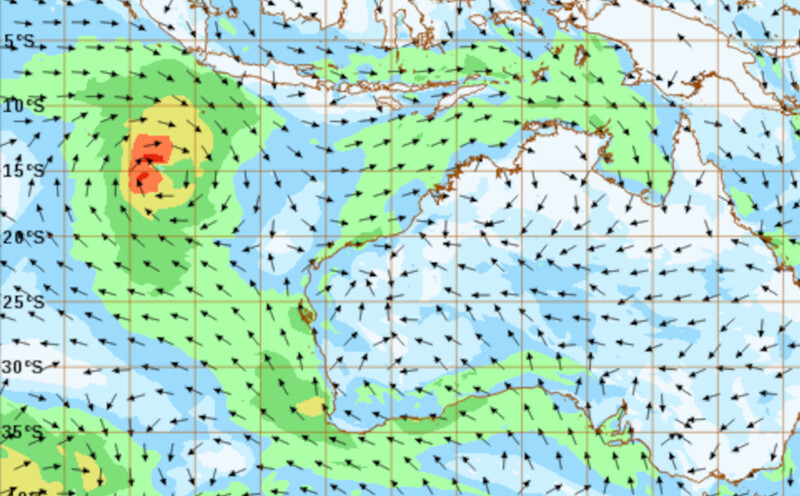
![]() As a rule of thumb El Niño years produce the best surf and La Niña years are more fickle and inconsistent.
As a rule of thumb El Niño years produce the best surf and La Niña years are more fickle and inconsistent.
☑ Recommended months:
Your skill level and personal preferences will determine the best months to visit:
- Beginner: Not recommended at anytime of the year.
- Intermediate: Arrive for a shoulder season when the waves are smaller and crowds are lighter.
- Advanced: Plan your trip during the peak season for more powerful, consistent waves at Way Jambu, Jimmy's Right and Honey Smacks.
- Expert to master: Fly in when the surf is predicted to be World Class.

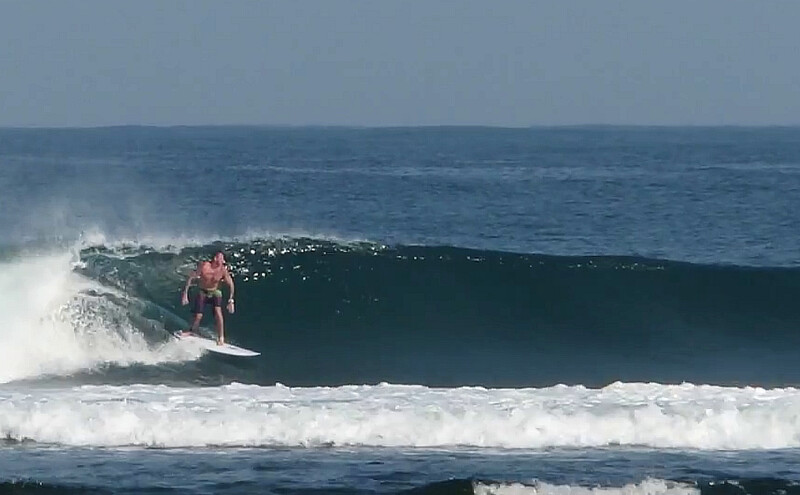
When not to come
Plan around the WSL Krui Pro. 300 competitors descend on the area for 2 weeks during May, June or July. If you don't enjoy competing for waves with 20+ wannabe pros, steer clear of this event.
Time and luck
There is no ideal swell and wind direction that gets all the breaks in the area working at the same time. Each 'surf zone' (Tanjung Setia, Mandiri, Krui and Utara District) requires it's own particular conditions to be lined up and firing.
- During peak season 1 quality swell hits the coast approx every 11 days lasting 4 to 5 days.
On a short 10 to 14 day trip your fate is in the hands of "lady luck". You could score good waves or suffer very poor quality waves due to off
swell direction.
☑ Recommended min stay: 4 weeks.
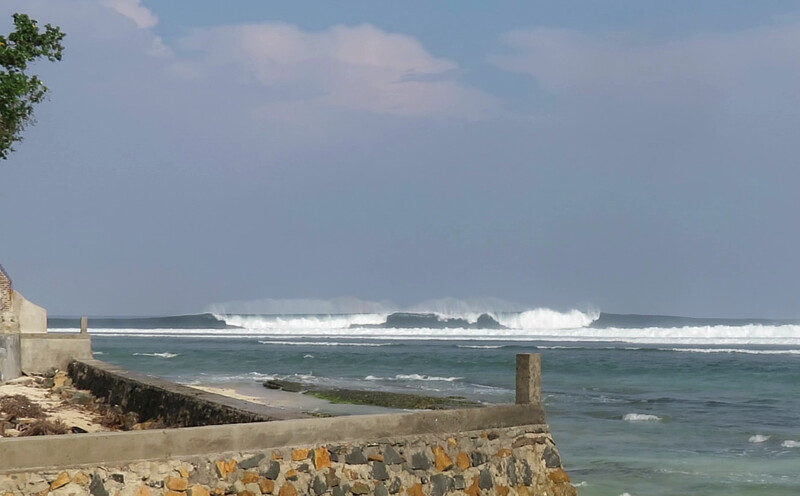
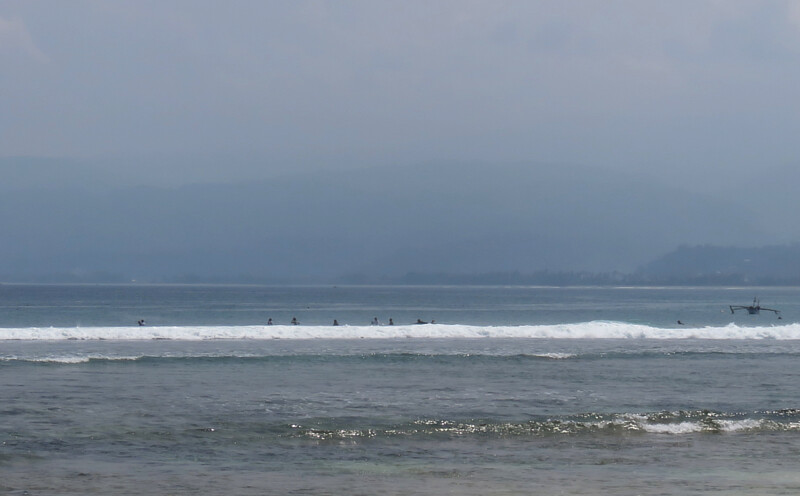
Mobility & Transport
On the same day it's common to find Krui Left flat, Mandiri Beach blown out, tide too low at Way Jambu and Karang Nyimbor (Ujung Bocur) your only option. You need to be mobile, traveling to where the conditions are best.
This leaves you with 3 options:
Remain at one surf break
Not recommended. If you did decide to limit yourself to one area then Tanjung Setia is the best choice as Ujung Bocur picks up the most swell. Forget Krui town as Krui Left, Leftovers and The Peak are flat for days on end even during peak season.
Hire a scooter / motorcycle
At IDR 65000 a day this is the most popular and cost effective transport. Legally you will require an International Drivers Licence. Comprehensive travel insurance is highly recommended as accidents are common and can become a costly legal nightmare.
Hire a car & driver
Expensive unless you share the costs. The 35km trip from Tanjung Setia to Krui town cost IDR 300000 in 2025.
☑ Recommended transport: scooter hire.
The growing crowds
Be warned crowds are increasing at a rate of approx 10% year on year. From May to August the major surf breaks can get really crowded when the surfable wave face is under 2.7 mtrs.
What about the secret spots
?
A quick on-line search returns 180,000 web pages advertising the Krui area. There are no longer any secret spots, surf guides, surf camp owners and satellite imagery exposed those years ago.
Better to prepare for the crowds and maintain your stoke.
☑ Recommended attitude: laidback.
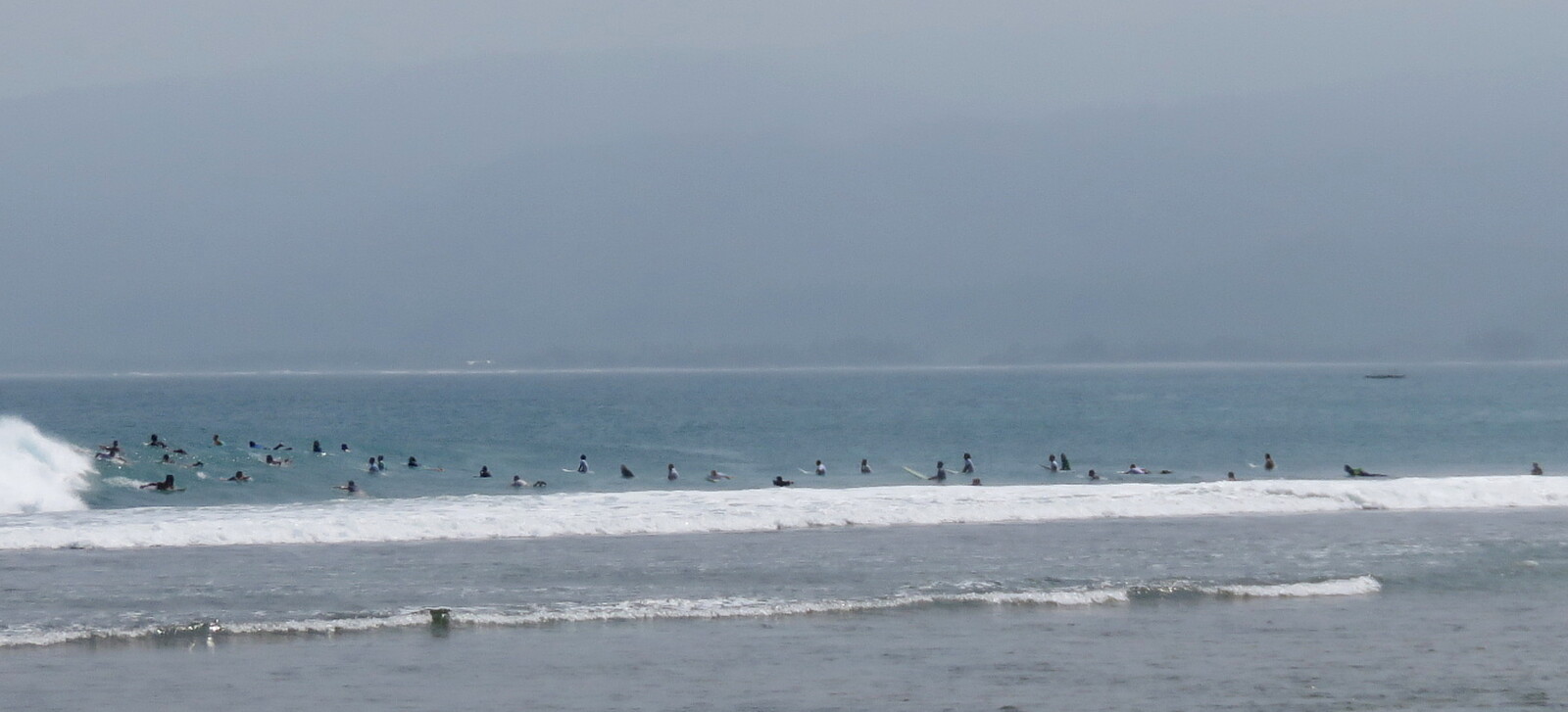
What to bring
There are no surf shops in the area that sell a full selection of surf gear so bring everything with you. Extra boards, big wave leashes and a good supply of fins. A pair of reef boots to protect against sea urchin spines, the odd stone fish or fishing hook.
Money
There are a number of ATM machines in the area but they can be very unreliable. There are no money changers in the Krui area. Your last chance to easily change foreign currency is in Jakarta. There is a money changer in Bandar Lampung city but it's a long way from the airport.
Travel Insurance
Surfers get seriously injured here so it's highly recommended that you have travel insurance that covers all the activities you plan to be involved in (surfing, motorcylce,...,...).
International Drivers Licence
Foreigners are legally required to have a current International Drivers Licence to drive any vehicle in Indonesia. If you have an accident without one your insurance will not cover your personal injuries or 3rd party liability.
Tides
If your plan is to surf Way Jambu or Jimmy's Right make sure the prevailing tides will be favourable.
Tides on this coastline can be really funky. Some months there are virtually no daytime high tides for 2 weeks. At most breaks a tide of .0 to .3 mtrs is getting dangerously low.
